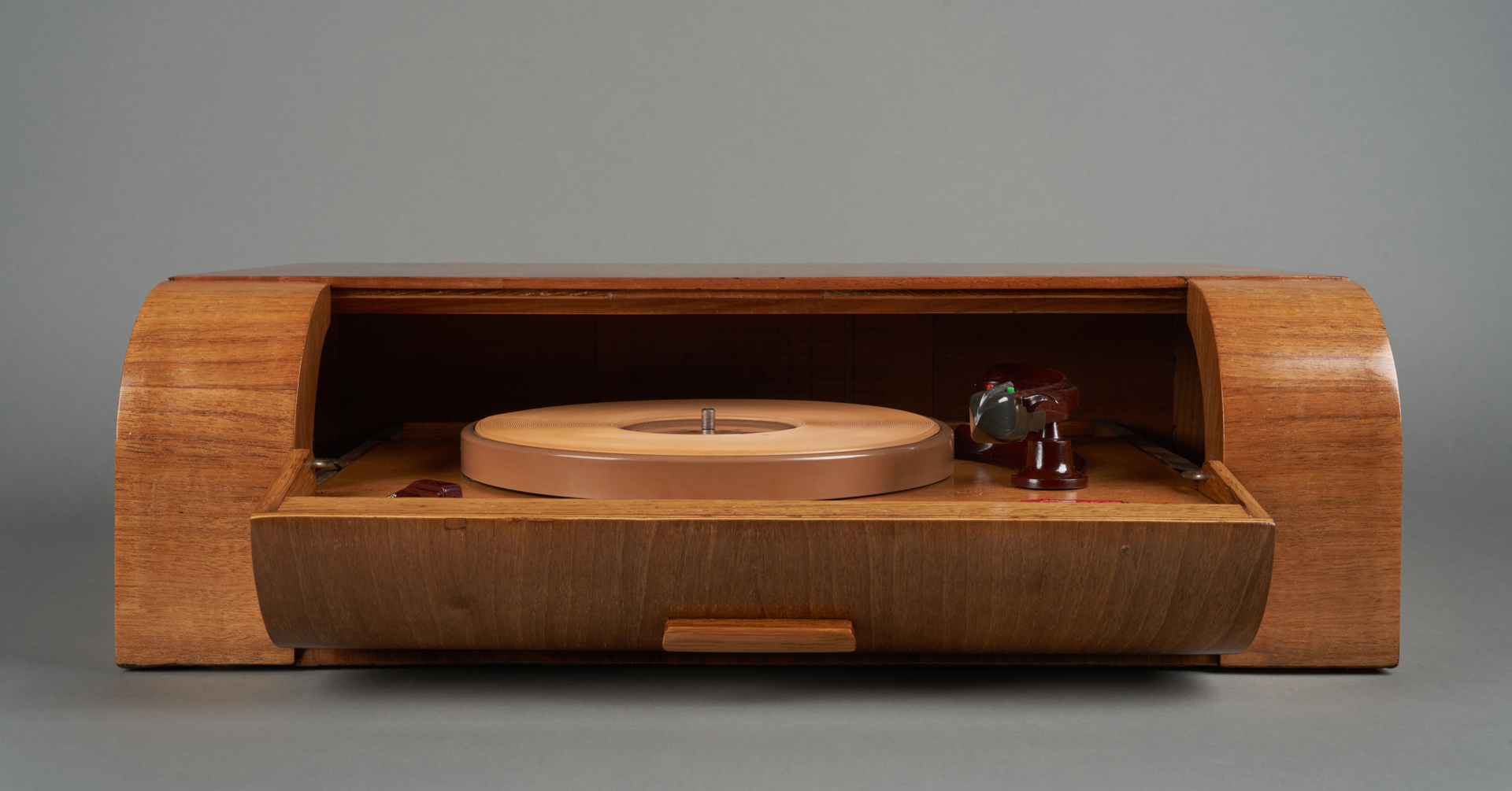
Rytm gramophone
Zakłady Metalowe im. Józefa Stalina w Poznaniu, / 1956 - 1957Creator
Zakłady Metalowe im. Józefa Stalina w Poznaniu
Time and place of creation
Time:
1956 - 1957
Place:
Poland
The Rytm electrical gramophone was developed in response to the growing needs of the musical market in terms of devices for the playback of gramophone records. They grew in importance in the wake of the thaw and cultural changes after the period of heavy-handed Stalinist indoctrination of Poland in the early 1950s. The Rytm is one of early examples of devices of this type designed in the post-war period. The T-4 factory (later: Łódzkie Zakłady Radiowe Fonica) was selected to be the national leader in the production of gramophones in the 1960s and 1970s. In the 1950s that position was not yet allocated, and the companies that became part of the Zjednoczenie Przemysłu Elektronicznego i Teletechnicznego Unitra in 1961 were still in the process of defining the profile of their production.
The Rytm is an effect of that search. It was developed at the facilities of the Hipolit Cegielski Poznań plant. In 1949, the factory was nationalised, and its name changed to Zakłady Metalowe im. Józefa Stalina in Poznań (ZISPO). Production and sales of the gramophone began on the cusp of 1956 and 1957. During the 20th Congress of the Communist Party of the Soviet Union on 24 – 25 February 1956, in a closed session, Nikita Khrushchev gave a secret presentation disclosing the crimes and abuses of Stalin. On March 12, Bolesław Bierut died, who was responsible for implementation of Stalin’s policies in Poland. On June 28, three days of riots began in Poznań – widely known as the “Poznań June” – which were initiated by workers of the ZISPO production plant who demanded “freedom and bread”. Even though the protests were violently quelled they became symptomatic of the mood among the public. On November 1, the name ZISPO was changed to Zakłady Przemysłu Metalowego H. Cegielski in Poznań, Przedsiębiorstwo Państwowe (Eng.: state-owned enterprise).
Enclosed in a veneer wood housing, without a built-in amplifier, the tabletop Rytm gramophone slides out of its body on the lowering of a semi-circular front cover – hence its nickname of the “bread box”. ZISPO was responsible for the production of the drive mechanism and for the assembly of the device. Over different periods, three types of adapter arms were used, each subsequently replaced by a better design. Chronologically, they were the adapters of the Poznańskie Zakłady Przemysłu Muzycznego Muza Poznań, the ZISPO adapters with a dual-needle cartridge, and the most numerous GD-56 adapters made by the Łódzkie Zakłady Radiowe T-4, with their arms made of Bakelite. The latter is installed in the presented unit. Apart from the tabletop version, the gramophone was also produced in a suitcase form, with a housing that could differ in shape, materials used and finish.
Author: Filip Wróblewski
Rytm gramophone
Zakłady Metalowe im. Józefa Stalina w Poznaniu, / 1956 - 1957Creator
Zakłady Metalowe im. Józefa Stalina w Poznaniu
Time and place of creation
Time:
1956 - 1957
Place:
Poland











